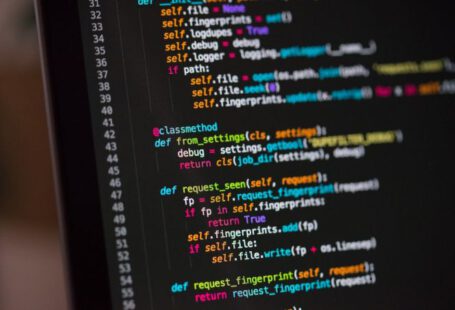The field of web development is constantly evolving, driven by advancements in technology and changing user expectations. As we enter a new decade, it’s important for web developers to stay ahead of the curve and anticipate the upcoming trends that will shape the industry. In this article, we will explore some of the predicted tech trends that are expected to have a significant impact on web development.
Artificial Intelligence and Machine Learning
Artificial Intelligence (AI) and Machine Learning (ML) have already made their mark in various industries, and web development is no exception. AI-powered chatbots, voice assistants, and recommendation systems have become increasingly common on websites, providing personalized experiences for users. In the coming years, we can expect to see further integration of AI and ML technologies in web development, enabling websites to provide even more intelligent and customized experiences.
Progressive Web Applications
Progressive Web Applications (PWAs) have gained traction in recent years due to their ability to offer a native app-like experience on the web. PWAs are built using web technologies such as HTML, CSS, and JavaScript, but they can be installed on a user’s device and accessed offline. This trend is expected to continue as more businesses realize the benefits of PWAs, including improved performance, increased engagement, and reduced development costs compared to native apps.
Voice User Interface
With the rise of smart speakers and voice assistants like Amazon Alexa and Google Assistant, voice user interface (VUI) is becoming increasingly popular. VUI allows users to interact with websites and applications using their voice, eliminating the need for traditional input methods such as typing or clicking. As voice recognition technology continues to improve, web developers will need to adapt their designs and optimize their content for voice search and voice commands.
Internet of Things
The Internet of Things (IoT) refers to the network of physical devices, vehicles, appliances, and other objects that are embedded with sensors, software, and connectivity, enabling them to connect and exchange data. As the number of IoT devices continues to grow, web developers will need to adapt their skills to create web interfaces that can interact with these devices. This could include developing web applications for smart homes, wearable devices, or industrial IoT systems.
Blockchain Technology
Blockchain technology, initially popularized by cryptocurrencies like Bitcoin, is now finding its way into various industries, including web development. Blockchain provides a decentralized and secure way to store and verify data, which can be particularly useful for applications that require trust and transparency. Web developers can leverage blockchain technology to create decentralized applications (dApps) or implement secure payment systems.
Cybersecurity
With the increasing number of cyber threats and data breaches, cybersecurity has become a top priority for businesses and individuals alike. Web developers will need to stay up to date with the latest security practices and technologies to protect websites and applications from potential vulnerabilities. This includes implementing secure authentication methods, encrypting sensitive data, and regularly updating software to address security vulnerabilities.
Conclusion
The field of web development continues to evolve at a rapid pace, and staying ahead of the latest tech trends is crucial for web developers. From AI and ML to PWAs and VUI, these predicted trends offer new opportunities and challenges for web development. Embracing these trends will not only enhance user experiences but also ensure that websites and applications remain competitive in the ever-changing digital landscape. By keeping a finger on the pulse of these tech trends, web developers can future-proof their skills and deliver innovative solutions that meet the needs of tomorrow’s users.





